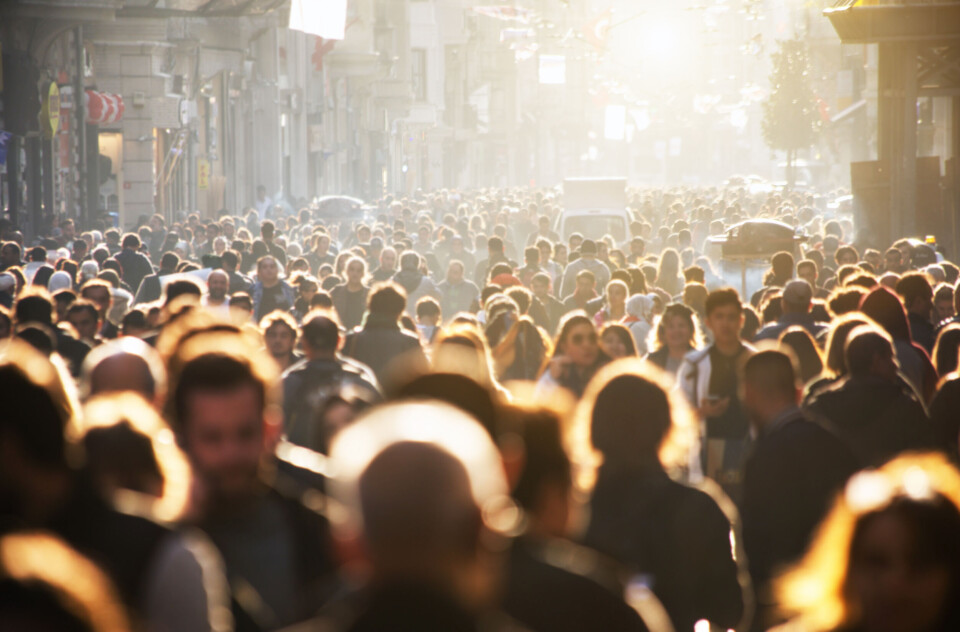-
Free fraud service for UK homeowners living in France
Owners are encouraged to sign up for a free monitoring service from HM Land Registry to reduce risk
-
New civic tests for foreigners in France launch amid criticism
Applicants for some types of residency cards must now take 45-minute test
-
Workers in France can take 17-day break using only eight days of leave in 2026
Favourable calendar for public holidays makes extended May break possible, with five guaranteed long weekends throughout year
Has your area of France gained or lost inhabitants in recent years?
New statistics for 2014-2020 show a slowdown in population growth but not evenly across the country. Paris has lost tens of thousands of residents

France is seeing a demographic slowdown, with its population increasing by 0.3% each year on average between 2014 and 2020, a new study published by the national statistics institute Insee shows.
In the previous five-year period 2009-2014, the population grew by 0.5% on average each year.
However, in the latest reference period, the difference between births and deaths has shrunk by 0.1%, as a result of the “arrival at old age of the large generations of the baby boom era” and a decline in birth rates.
This report also shows differences across the country with population numbers shrinking between 2009 and 2014 in 21 different departments, increasing in 53 and staying stable in 26.
“We consider a department to have a declining population when it has an annual average of -0.2%, to have a stable population between -0.1% and 0.1%, and to have a growing population beyond that,” Insee told Franceinfo.
The rate of variation is calculated from the difference between births and deaths and the difference between the number of people moving in and out of the department each year.
It is in the overseas department of Martinique where the population declined most significantly between 2014 and 2020, with a drop of -1%.
“A high number of departures – normally towards metropolitan France – have taken place largely among young people pursuing studies or a career,” Insee stated.
Guadeloupe also saw its population decline by 0.7%.
In metropolitan France, population shrinkage was at its most significant in several Grand Est departments, with Meuse and Haute-Marne seeing their inhabitant numbers fall by 0.8%, Ardennes experiencing a 0.6% drop, and Vosges 0.5%.
Several departments in the centre of France have also seen their population grow smaller. Nièvre had a 0.9% drop, Creuse and Indre 0.6%.
Between 2014 and 2020, Paris lost 75,000 residents, meaning that its population shrank by 0.6%.
“These departures from the capital are normally caused by the increased cost of housing, a lack of larger housing for families and the search for a different lifestyle,” Insee states.
Population growth in other departments
In other departments, the population grew larger. For example, in French Guiana, there was a 2.1% increase in inhabitant numbers, in Gironde, Haute-Garonne, Hérault and Loire-Atlantique a 1.2% increase, in both Corsican departments a 1% increase and in Haute-Savoie a 1.1% increase.
Population growth has generally been seen across western France and Ile-de-France (apart from Paris). For example, Seine-Saint-Denis experienced a 0.9% population increase.
In Brittany, Ille-et-Vilaine was the department to see the biggest population rise at 0.9%. This department currently houses 32% of the region’s residents, mostly because Rennes is found within it.
The population also grew in general in Auvergne-Rhône-Alpes and Provence-Alpes-Côte d’Azur.
Individual departmental fluctuations aside, the population generally remained stable in Bourgogne-Franche-Comté, Hauts-de-France, Normandy, Centre-Val de Loire and Grand Est.
On January 1, 2020, France had a population of 67,162,000, while on January 1, 2022, it is thought to have grown to about 67,800,000, with fertility rates having increased slightly during the Covid pandemic.
You can read the Insee report (in French) here.
Related articles
Remote French village reinvigorated by women farmers and Basque pigs
Fantastical French pebble palace among 10 most-Googled cultural sites
Mediterranean garden in south of France is a winter paradise
























